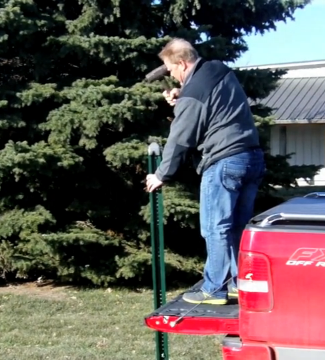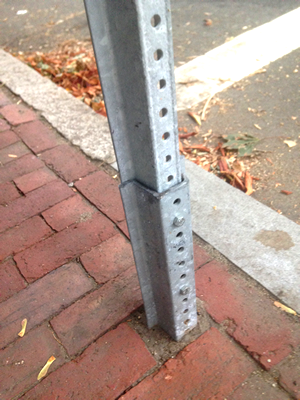A.
Most No Parking signs are 12” across by 18” in height and they are mounted at a height of 6’ (using a typical 8’ post that is sunk 1.5-2’ into the ground). Yet, we see a shift towards larger 18” x 24” parking signs and 10’ posts. This is in part due to larger and taller cars. A bigger sign can be seen from a greater distance and around those large Hummers and other gas guzzling trucks.
Now, there are no specific height requirements for a simple No Parking sign, however, there are certain regulations for No Parking Tow Away signs. Most states have their own specifications for how large the sign must be and how high off of the ground it should be posted. Some, like California, require a Tow Away sign to be no less than 17” x 22”, while others, such as Texas legally recognizes only those signs that are at least 18” x 24” in size.
Some states however, do not have such requirements, but rather than being discreet with a smaller sign in a not-so-visible location make sure you cover all your bases with a larger sign that gets noticed. After all, the whole point of a No Parking Tow Away sign is not for it to get lost in a sea of oversized vehicles and go unnoticed, but rather to prevent drivers from parking in designated spots. A larger, threatening sign is sure to scare potential violators away from reserved parking spaces.
A good rule of thumb here is that more is better. Go big! There are no downsides, save for the small cost of the 216 square inches of additional visibility for an 18” x 24” sign. A sign that meets all of the size regulations is a worthy (and low cost!) investment. To prevent any confusion or possibly a minor law suit, make sure that your No Parking Tow Away sign is conspicuous enough to get noticed, even when a Hummer is parked right in front of it.













 The Post Driver is surprisingly easy to use, even for a first-timer. For narrower (2.5" diameter) posts, our post drivers are tough enough to let you give a "dead blow" -- just hold the handle firmly and take advantage of a 30% more efficient drive.
The Post Driver is surprisingly easy to use, even for a first-timer. For narrower (2.5" diameter) posts, our post drivers are tough enough to let you give a "dead blow" -- just hold the handle firmly and take advantage of a 30% more efficient drive.